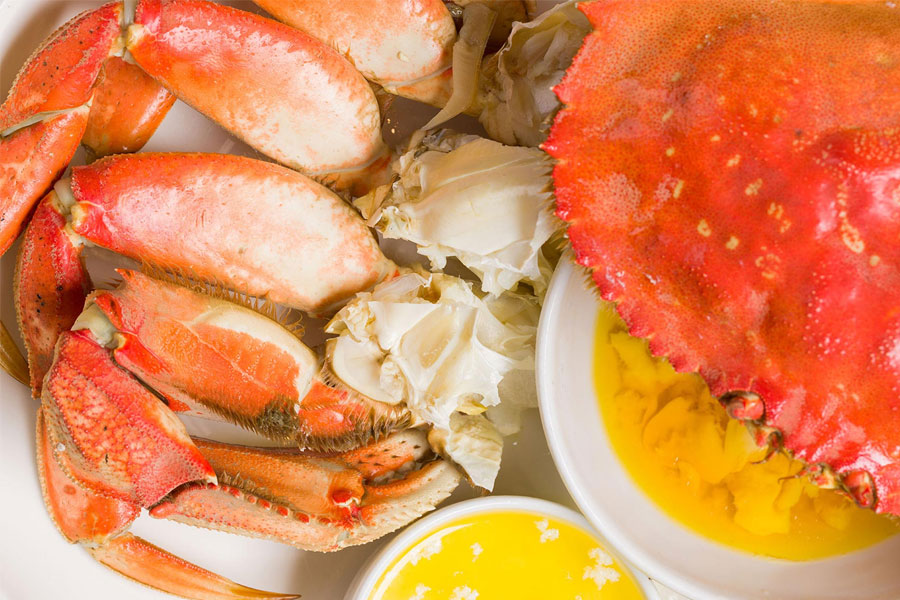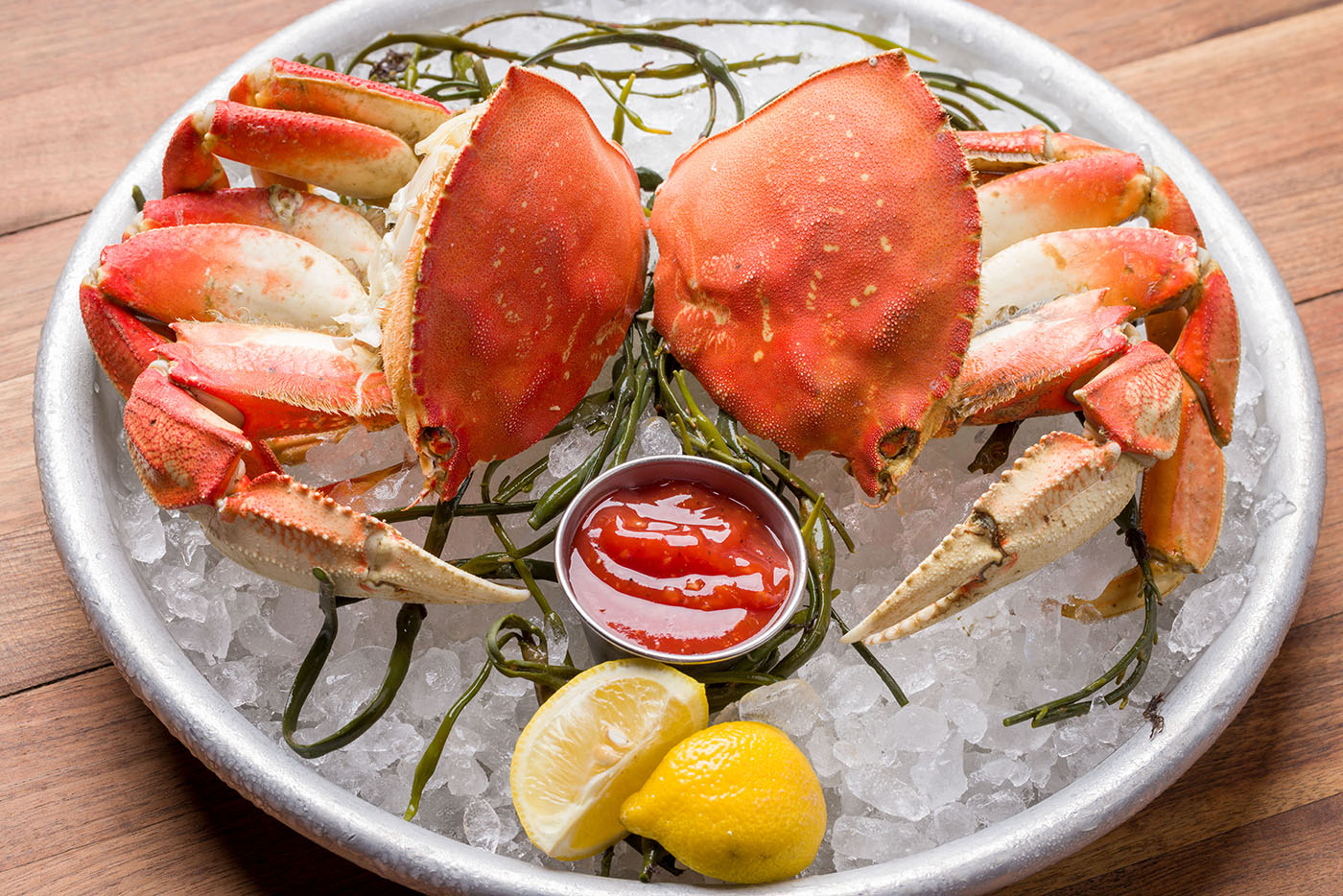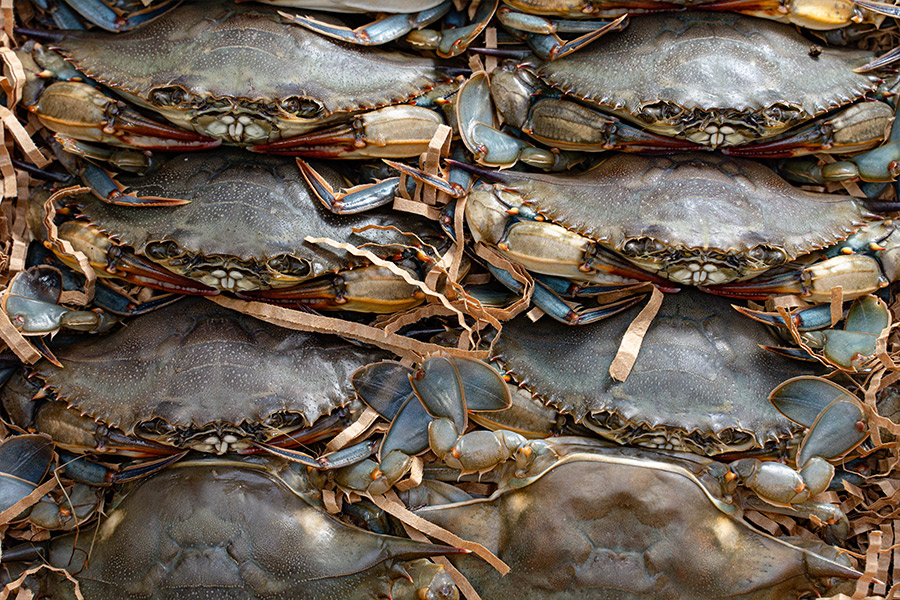California Spiny Lobster Season Returns
There’s a season we celebrate every year, symbolized by an icon cloaked in red who brings joy to seafood lovers on the West Coast. No, it’s not Santa Claus. In fact, there are no claws at all. When the calendar pages turn to October, it signals the start of California Spiny Lobster season!
Get ready to throw on a buoy bib and dig into this uniquely Californian delicacy!
What is a Spiny Lobster?
Part of the Palinuridae family, Spiny Lobsters get their name from the forward-pointing spines that cover their bodies to protect them from predators. While that’s one point of visual distinction, you can also tell them apart from their North American Hardshell counterparts by the lack of front claws, their powerful tails and long, spiky antennae.
Also referred to as Rock Lobster, Spiny Lobsters can be found in warmer seas around the world. In the waters of the Bahamas, New Zealand and South Africa, you can find them under the name Crawfish or Crayfish – a name typically reserved for Freshwater Crawfish in the United States.
.png)
Don’t let the lack of front claws fool you or deter you – the meat yield of the Spiny Lobster, or “bugs” as they’re affectionately called, is generally about 25% more per pound compared to a North American Hardshell Lobster.
Without front claws as a defense mechanism, Spiny Lobsters will use their powerful tails and strong spines as a means of defense against sheepshead, black seabass, sea otters and octopuses. It’s from this muscular section where most of the meat is found.
Spiny Lobsters are also predators themselves. As nocturnal scavengers, they come out of their dens to forage in the rocky areas where they reside to feed on mussels, sea urchin, small fish and sometimes other lobsters.
California Spiny Lobster Season

The season for California Spiny Lobster typically runs from October through March. And, of the spiny lobsters caught in California, as little as 10% stay in the United States. It's a unique treat and Water Grill is pleased to be one of the only places where California Spiny Lobster is on the menu during the season.
Management over the fisheries of California Spiny Lobsters is overseen by the California Department of Fish and Wildlife, which sets strict daily catch and permit issuance numbers during the season.
Enforcement most often occurs through managing the size of the lobsters that are caught. All lobsters, both commercially and recreationally caught, must be of legal size, which is defined by the lobster having a carapace (or top outer shell) of 3.5” in length.
Spiny Lobsters will achieve this length when they are about seven to 11 years of age. This allows them to reproduce at least once in their lifetime, ensuring the continuation of the species.
Typically caught by lobster traps that slowly move into deeper waters as the season progresses, about 80% of the spiny lobsters that are caught measure at one and a quarter to two pounds. Some have been known to reach as much as 20 pounds.
Like their name suggests, California Spiny Lobsters are caught off the coast of California, with a range as far south as Magdalena Bay in Baja California, Mexico, and as far north as Morro Bay, Calif.
California Spiny Lobster on our menus
At Water Grill, you’ll find live, wild California Spiny Lobster swimming in our saltwater tanks. We prepare them to order, finished on the grill and paired with lobster butter and a grilled lemon. Check out our daily menus and catch this Californian delicacy while it’s in season!

.png)
Water Grill Bellevue Welcomes Crab Week!

Crab week is August 15 - 23!
We're participating in the Bellevue Crab Week! Come down to Lincoln Square and dine with us at to enjoy some of the best the ocean has to offer, including a locally-sourced specialty in Wild Washington Dungeness Crab, or an East Coast favorite like Wild Maryland Soft Shell Crab.
Crab Week marks the perfect occasion to try a new addition to our menu: Soft Shell Crab Curry. Wild Maryland soft shell crab meets the bold flavors of Thailand in a dish that celebrates the crab's sweet, briny and slightly nutty notes.
LEARN MORE ABOUT WILD WASHINGTON DUNGENESS CRAB

When they're in season, Dungeness Crabs are a fixture in our live saltwater tanks. Known for their mildly sweet and firm but delicate texture, these crabs have been commercially harvested since 1848. Although they're named from where they can be found in the Pacific Northwest, these crabs are fished by crab pot all over the west coast of North America--from Alaska's Aleutian Islands down to Santa Barbara, California.
Read more about the Dungeness Crab in our blog!
LEARN MORE ABOUT WILD MARYLAND SOFT SHELL CRAB

As waters in the Chesapeake Bay begin to warm in spring, blue crabs are carefully monitored and plucked out of the water at peak tenderness, just as they molt and their shells have yet to harden. Soft Shell crab is an East Coast delicacy known for its seasonality and unique flavor--sweet and earthy with olive-like notes imparted from the shell.
